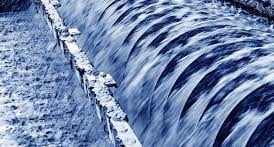Background
Western Water (WW) provides water, sewerage and recycled water services to 61,000 properties with a population of 162,000 across a region of 3,000 square kilometres to the north-west of Melbourne. Since the authority’s establishment 20 years ago, Western Water has seen its service population more than double. This strong growth rate is projected to continue as suburbs around Melton and Sunbury develop over the coming decade. Nearly all towns in the service area now have a secure water supply through provision of alternate supplies to local water. These include interconnection to adjoining supply systems as well as access to Melbourne water.
Project aim
Intrusion of roots into sewer pipelines is among the most destructive problems encountered in a wastewater collection system. It is notable that approximately 10-25% of all collection systems have some fraction of roots intrusion which causing sewage overflow and damaging the pipeline and other public health and environmental problems. In practice, chemical herbicides have been widely used for controlling root intrusion in pipes. However, adding herbicides in sewer lines may affect downstream biological wastewater treatment processes. This is because various concentrations of chemical substances and metal ions present in herbicides can inhibit the activity of microorganisms in activated sludge and destroy their functions. Therefore, careful consideration must be given to the application of root control chemicals in sewer collection systems since the concentration and type of herbicide may impact on the performance of wastewater treatment plant plants, especially on the nitrification of activated sludge systems. However, a clear understanding about the risk of using different types of herbicides for tree root removal into wastewater treatment plant performance and threshold concentrations inhibiting nitrification for most of the root control chemicals are not yet known.
The objective of the project is to understand whether adding current herbicides used for tree root removal will increase the toxicity of the influent and adversely affect the performance of the recycled water plant. This study will also assess the effect of dosage and type of herbicides which may be less/no impact on nitrification process.
Deliverables
The deliverables of this project will be staged with an initial focus on literature review and data collection and some filed work.
| Deliverable | Description | Initial Timing Estimate |
| Commencement Workshop | Collect Data from WW
● Orientation to the project ● Overview of literature and water industry reports ● Individual student briefs and research questions |
Feb- Early March |
| Milestone 1 | Project Plan | March |
| Milestone 2 | Preliminary analysis of Data
· Evaluation of data
|
May |
| Milestone 3 | Progress report. | Early June |
| Milestone 4 | Draft Project Report. | Early September |
| Milestone 5 | Project Report. | End September |
| A presentation on the project report. | End October |

